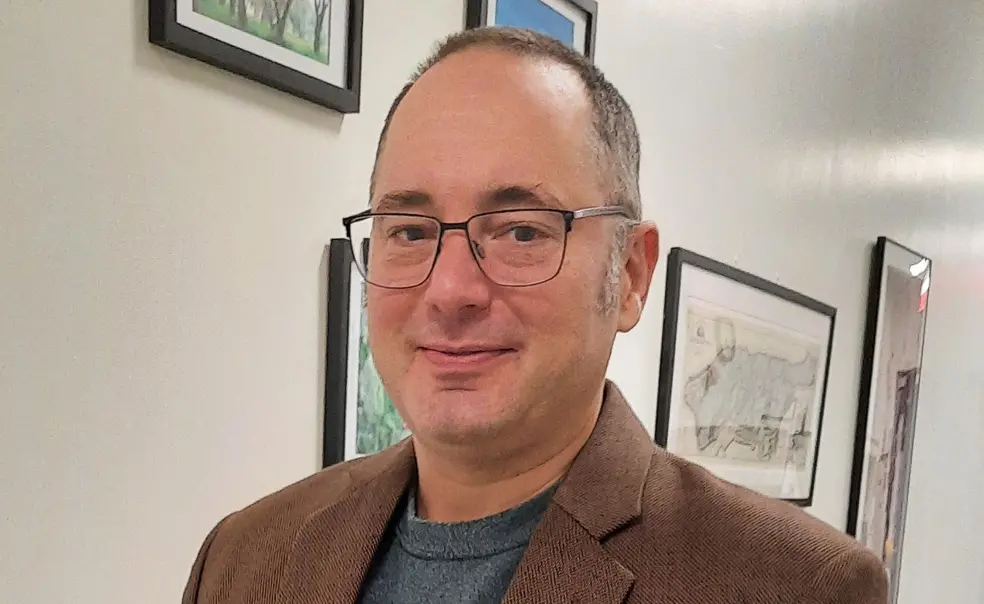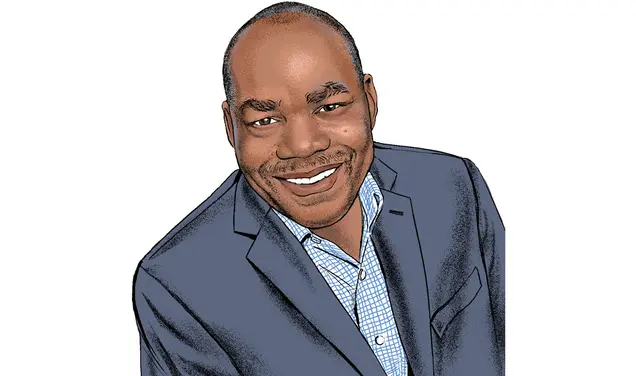Peter Moskos ’94 Writes About NYC Policing and Reduced Crime Rates in New Book
The book: Author Peter Moskos’ deeply researched book takes readers behind the scenes of the NYPD to unpack the rise and fall of crime from the 1970s through 1990s. A sociologist and former police officer, Moskos lays out the leadership and action that took New York City from record crime rates to some of the lowest — compared to other major cities — in just a few decades. Back from the Brink (Oxford University Press) includes interviews with police officers, civic leaders, academics, and reporters who reflect on how NYC became one of the safest big cities in the U.S. Moskos also offers a blueprint for the ways policing can be transformational.

The author: Peter Moskos ’94 earned his undergraduate degree in sociology from Princeton. He is a professor in the Department of Law, Police Science, and Criminal Justice Administration at John Jay College of Criminal Justice in New York City. His other books include Cop in the Hood, In Defense of Flogging, and Greek Americans.
Excerpt:
The 1970s was a particularly tumultuous decade for New York City. The Twin Towers of the World Trade Center were built, the Knicks won two basketball championships, the Yankees went to the World Series three times, and not far from Yankee Stadium in the Bronx, DJ Kool Herc hosted parties that would mark the birth of hip-hop. Nevertheless, a great city was in decline and had lost 10 percent of its population in ten years. In 1970 the city towed away 73,000 abandoned cars. Part of a seemingly inevitable trend, Johnny Carson, the host of the long-running Tonight Show, left New York for Los Angeles in 1972. He and other comedians joked about the inevitability of getting mugged. “Guy walks up to a fellow,” said Henny Youngman. “‘Do you know where Central Park is?’ Fellow says no. Guy says, ‘That’s okay, I’ll mug you right here.’”
Murders in New York City steadily increased from 390 in 1960 to more than 1,800 in 1980. In 1971, 1,466 people were murdered, 229 in robberies alone. Attacks on police were also on the rise: in 1971, fifty-nine New York City Police officers were shot, twelve fatally.
Of these 59, four were not through usual interactions with suspects, but disturbing surprise attacks linked to the Black Liberation Army, a militant offshoot of the Black Panthers. On May 19, officers Thomas Curry and Nicholas Binetti were led on a car chase, during which they were shot and severely wounded. Two nights later, officers Waverly Jones and Joseph Piagentini were ambushed by gunmen. Jones died instantly; Piagentini was shot 22 times before he died.
In January 1972, two more police officers, Greg Foster and Rocco Laurie, were murdered without warning while walking the beat on Avenue B in Manhattan. But talk of any coordinated attacks on police was muted by Mayor John Lindsay, who would soon announce his run for US president. His police commissioner, Patrick V. Murphy, publicly insisted the killers were just a “roving” band of “crazies.”
As for those killed by police, the New York City Police Department made its first concerted effort to keep track in 1971. That year, police officers shot at least 314 people and killed 93. Some of these were victims of the stake-out squad, formed in 1968. Police officers would hide in businesses, lying in wait for armed robbers. More than a third of the confrontations ended with a robber being shot. In the winter of 1971, seven robbers entered five staked-out stores. Six were killed and the seventh captured. “We didn’t keep records,” said one member of the stake-out squad. “We didn’t even keep a number of the felons who were put on a slab in the morgue.” The stake-out squad was disbanded when Commissioner Murphy stepped down in 1973, the last year of Mayor Lindsay’s term.
In April 1972, an emergency telephone operator (the 911 system had been created in 1968) received a panicked call: “This is Detective Thomas of the 28th Precinct. I’ve got a 10-13 for you at 102 West 116th Street.” 10-13 is the NYPD radio code for an officer in urgent need of assistance. The address, an apartment building in Harlem, was home to the Nation of Islam Mosque No. 7. The four responding officers did not know the call was a hoax, and perhaps a set-up. There was a Detective Thomas of the 28th Precinct, but he didn’t make the call. The identity of the caller remains unknown. One of the first officers who entered the mosque, Phillip Cardillo, was stripped of his gun and fatally shot.
Chief of Detectives Al Seedman soon arrived at the mosque and took custody of 14 suspects, one of whom had to be the killer. A riotous crowd gathered outside as rumors spread. Seedman telephoned police headquarters demanding backup to control the crowd. His request was denied. Soon Seedman was joined by Congressman Charles Rangel, Louis Farrakhan (the minister of the mosque and national spokesman for the Nation of Islam), and NYPD Deputy Commissioner Benjamin Ward (who would later become the city’s first black police commissioner). After receiving a promise, subsequently not honored, that the suspects would later be made available to the police, Chief Seedman ordered cops out of the mosque, and the NYPD abandoned the building, the crime scene, and the murderer.
The New York Times would glumly call this “the city’s first substantial racial disturbance this year.” Minister Louis Farrakhan demanded an apology from the mayor and the police commissioner, as well as the removal of white cops from Harlem. The NYPD responded with silence. A soon-to-resign police deputy commissioner of public affairs would write:
Silence had become a normal Police Department crutch. When in doubt, tell the people nothing. Secrecy was wrong, and it was especially wrong in this case. Secrecy here had made the police appear guilty. It had earned us the contempt of everybody. It had crushed the cops who knew the true story, and who wanted us to stand behind Cardillo and behind them.
Nobody was ever convicted of Cardillo’s murder.
Chief Seedman retired in disgust. Amazingly, neither Mayor Lindsay nor Police Commissioner Murphy attended Cardillo’s funeral. Later, a 1980 grand jury convened by the Manhattan district attorney found that the police investigation at the mosque had been “curtailed in deference to fears of unrest in the black community.”
In 1974 newly elected Mayor Abraham Beame appointed Michael Codd as police commissioner, who would serve four years. In October 1974 the FALN, a Puerto Rican separatist organization, began a terrorist bombing campaign in New York City. In 1975 the group set off a lunchtime bomb in Fraunces Tavern, the location where George Washington bid farewell to his officers in 1783. Five people were killed and 75 injured. Later that year another bomb, of unknown origin, killed 11 and wounded 74 people at LaGuardia Airport.
On Thanksgiving Day 1976, Police Officer Robert Torsney shot and killed Randolph Evans, an unarmed 15-year-old Black child, point-blank. Officer Torsney was arrested by police but found not guilty of murder, by reason of insanity, by an all-white jury. That same year, the “Son of Sam” began shooting young brunette women at random, killing six in a year of well-publicized terror before his 1977 arrest.
In 1977 the city plunged into a two-day blackout. Of 13,000 off-duty police officers called to face the emergency, only 5,000 showed up. Unlike an earlier city blackout in 1965 (and a later one in 2003), many neighborhoods descended into rioting, destruction, and looting. The New York Times condemned unemployment and racism while describing the looters as “victims of economic and social forces that they sense but do not understand.”
An opinion piece in the same paper sympathetically compared the riots to the kosher meat boycott of 1902. The city clerk of New York, future mayor David Dinkins, proposed a blue-ribbon panel to seek funds for a youth jobs program. The New York Amsterdam News, an African American paper, replied more strongly: “It is not enough ‘not to condone’ such
looting, we must forthrightly and adamantly condemn it. . . . It is self- destructive — suicidal — for us even to imply that we accept joblessness as a reason justifying looting — particularly when the stores looted were owned by other [Black people]. The looting that went on was criminal, outrageous and damnable.”
Fiscally the city was on the verge of bankruptcy. In 1974 Mayor Beame inherited a $1.5 billion deficit on a $10 billion city budget. The federal government’s unwillingness to help led to a New York Times headline: FORD, CASTIGATING CITY, ASSERTS HE’D VETO FUND GUARANTEE; OFFERS BANKRUPTCY BILL. But the fiscal crisis was immortalized by the more succinct Daily News headline: FORD TO CITY: DROP DEAD. In June 1975, the mayor announced end-of-the-month layoffs of 19,000 workers. Most thought it was a bluff, but “the public,” recalled an aide to the mayor, “had no inkling of the depth of the problem.” Police and firefighters unions created a pamphlet called “Fear City,” informing visitors how unsafe the city
would be without them. The guide was barely distributed, if at all, but it received press attention and then became somewhat prophetic when the layoffs did happen.
At 11:32 p.m. on June 30, 1975, the end of the fiscal year, a teletype message from police headquarters to the city’s precincts ordered the immediate collection of the guns and shields of many of the officers preparing to start the late tour. Close to 20% of the entire City Police Department, a total of 5,129 officers, were laid off.22 While 2,000 of the fired officers were hired back within a few weeks, more than 3,000 were not. The NYPD retrenched, both in numbers and philosophically. There would be no new police academy recruits until 1979. These layoffs and the chaos of the decade would scar the NYPD for a generation and were formative experiences for young officers who would later become police leaders during New York City’s extraordinary 1990s crime drop.
Excerpted from Back from the Brink by Peter Moskos. Copyright © 2025 and published by Oxford University Press. Reprinted with permission of the publisher.
Reviews:
“[Moskos] makes clear how policing, when used to actually address and solve crimes, can be transformational. A worthy read.” — David Simon, writer and producer of The Wire and We Own This City, and author of Homicide and The Corner
“A delightful read...Back From the Brink demolishes the assumption that cops can’t play a role in reducing crime. Judging by the state of America’s big cities in the 2020s, the book’s lessons might be usefully relearned.” — The Wall Street Journal












No responses yet